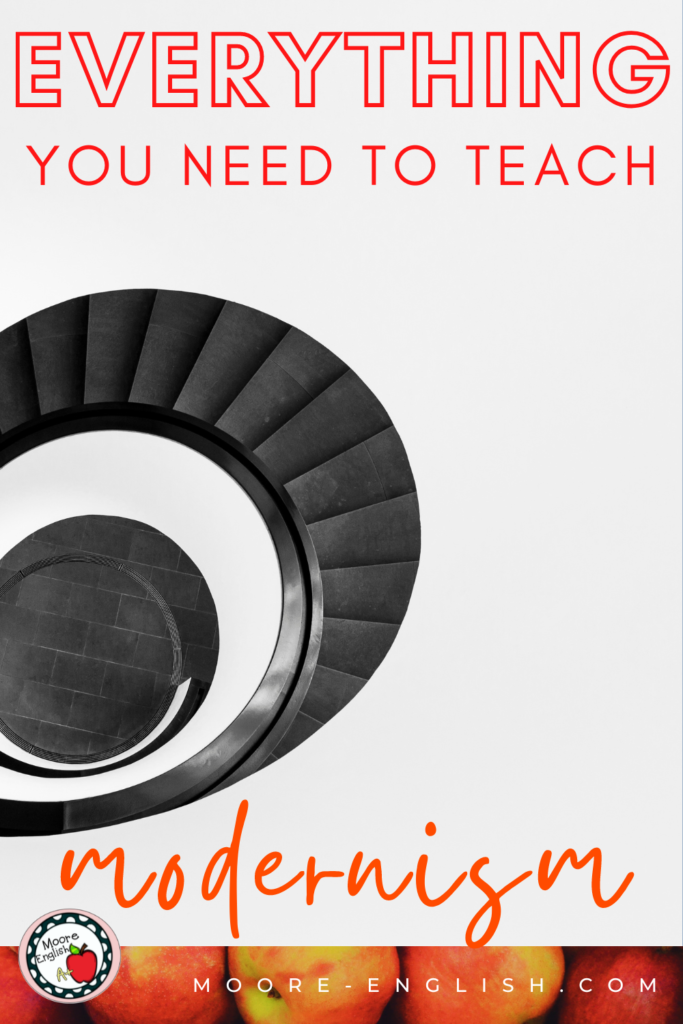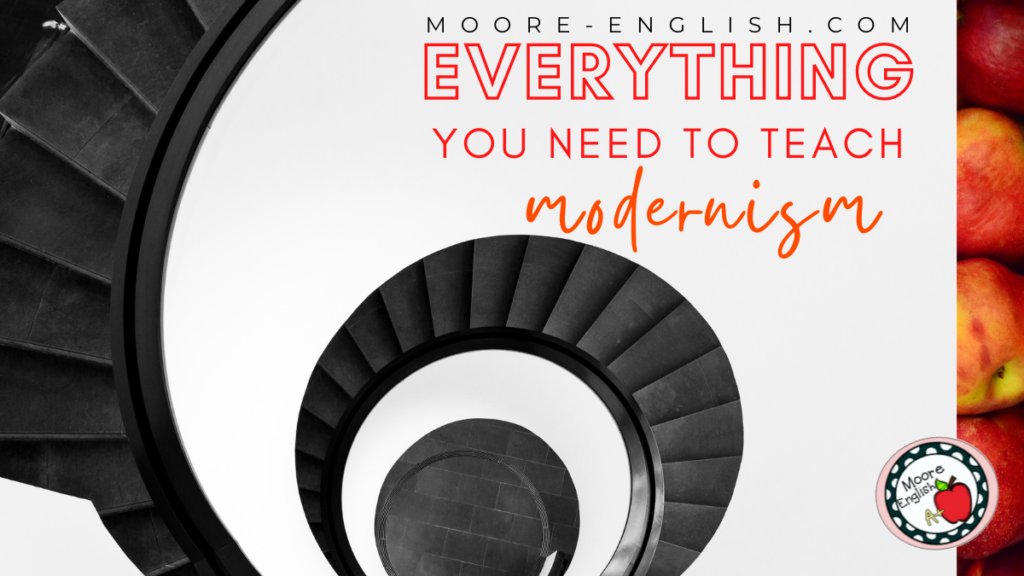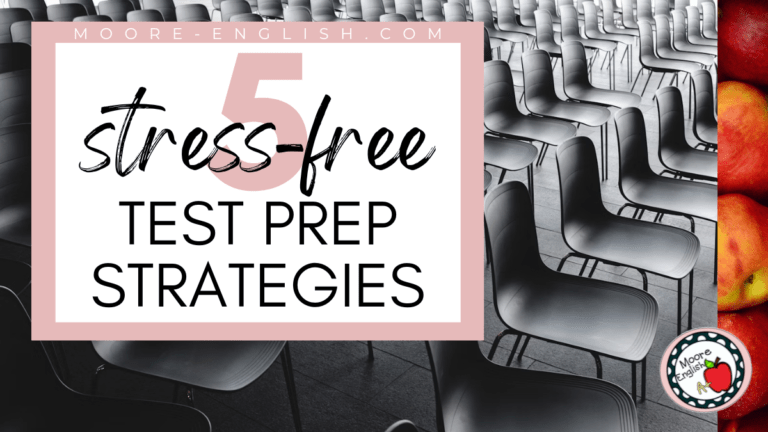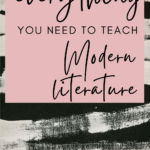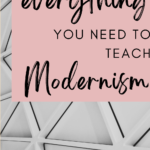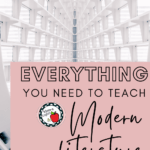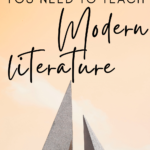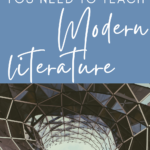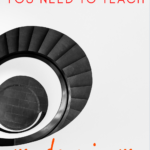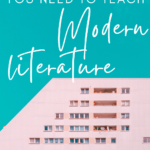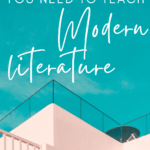In my junior English class, we spend a lot of time focused on American literary periods. Literary modernism is one of the trickiest to define. In academic circles, there is great debate about what “modernism” even means. However, to keep that confusion out of the classroom, I focus on a few specific characteristics of modernism.
To guide our study of American literary modernism, we focus on a few key questions:
- What is the historical setting of the text?
- How does literature reflect the historical context in which it was written?
- In what way would the text be different if it had been written in a different period?
This post this post may contain affiliate links. Please read the Terms of Use.
Introducing Modernism
By the time my juniors reach modernism, they have studied the American Enlightenment, Romanticism, Regionalism, and Realism.
Based on the time period in which modernism begins, I ask students what historical event likely begins this period. For the most part, they can name World War I. Then, we skip to the end of this time period and see that modernism ends with World War II. Based on these two bookends, I ask students to think-pair-share how they think that much war and trauma will affect American literature.
Then, I write students’ brainstorm on the board before we turn our attention to “The Death of the Ball Turret Gunner” by Randall Jarrell (read it here). I start with this poem because of its brevity, clear “plot,” and evident main idea. As a class, we read and annotate the poem. Then, we match the poem to students’ brainstorm. Which elements from students’ brainstorm appear in the poem? Which do not? What, if anything, do we need to add or remove from the brainstorm?
From here, I introduce this acronym to help students remember the elements of modernism. As we go along, we match the elements of the acronym to students’ brainstorm. Then, we look for each element of modernism in the poem.
War Poetry
To continue our study of modernism, we focus on war poetry. This collection of poems helps students build on their reading of “The Death of the Ball Turret Gunner.” It also helps students understand how the trauma of war affected and shaped modernist literature. War poetry also features isolated and alienated characters who are often rejecting tradition. Further, the psychological realism of war poetry helps students engage with the text.
- First, “Anthem for Doomed Youth” by Wilfred Owen does a good job expanding on Randall Jarrell’s work. This is the second poem we read because it has a clear perspective and voice. A lot of the poetry we read deals with the effects of trauma from World War I. Read it here.
- Similarly, “Grass” by Carl Sandburg focuses on the effects of war. This is a good upward scaffold because this poem has a more experimental structure. Certainly, the speaker is quite different from the speaker’s of Jarrell and Owen’s poems. Read it here.
Grab these poems plus four more in Synthesis Bundle #5: War Poems!
Increasing Text Complexity
In part, poetry is helpful because it’s easiest to see how modernist authors experiment with form in poems. The brevity of poetry also means that we can encounter more representations of modernism in quick succession. However, not all modern poetry is war poetry, and some poems are more complex than others. As our study of modernism continues, it’s important to continually scaffold students to more challenging texts.
- To begin “i carry your heart with me (i carry it in)” by E.E. Cummings is a good upward scaffold. From the start, Cummings’ structural choices instantly catch students’ attention. This poem is a clear example of how modern writers experiment with form and structure. However, it’s tonally very different from other modernist texts on this list, so it helps students see the diversity of modernism. Read it here.
- “The Unknown Citizen” by W.H. Auden introduces students to satire. The tone of this poem is so wildly different from previous poems on this list, and it uses a third-person narrator to such a jarring effect. Read it here.
- Similarly, “Musee des Beaux Arts” by W.H. Auden gives the modernist treatment to the story of Icarus. This poem really lends itself to the question: How would this moment be different if it were written in a different literary period? Read it here.
Find most of these texts in my Modernism Bundle!
The Great Gatsby
In terms of longer works and novels, The Great Gatsby is a quintessential piece of American modernism. To help students evaluate the text through its historical context, students may need to complete additional research about what America was like in the 1920s. To help students think through the text, consider the following activities:
- Engaging students with this free anticipation guide can help students to begin thinking about the issues involved in The Great Gatsby.
- Writing journals about the novel can help students evaluate the text’s modernism while also helping students make connections with the text. Check out my favorite journals!
- Keeping a symbol log can help students evaluate how the settings and symbols in the novel help Fitzgerald create class commentary.
- Using task cards can help students evaluate the text as a piece of modernism, but task cards can also help students apply literary criticism to the text.
Further Reading
Since literary periods play an important part in my junior American literature class, I’ve written a lot about the subject!
- How To Engage Students In Studying The American Enlightenment
- American Enlightenment Pacing Guide and Unit Bundle
- American Romanticism Unit Bundle and Resources
- Everything You Need to Teach Romanticism
- Everything You Need to Teach Regionalism
- American Literary Movements
- Regionalism Collection
- Modernism Collection
- Post-Modernism
- Realism Notes

